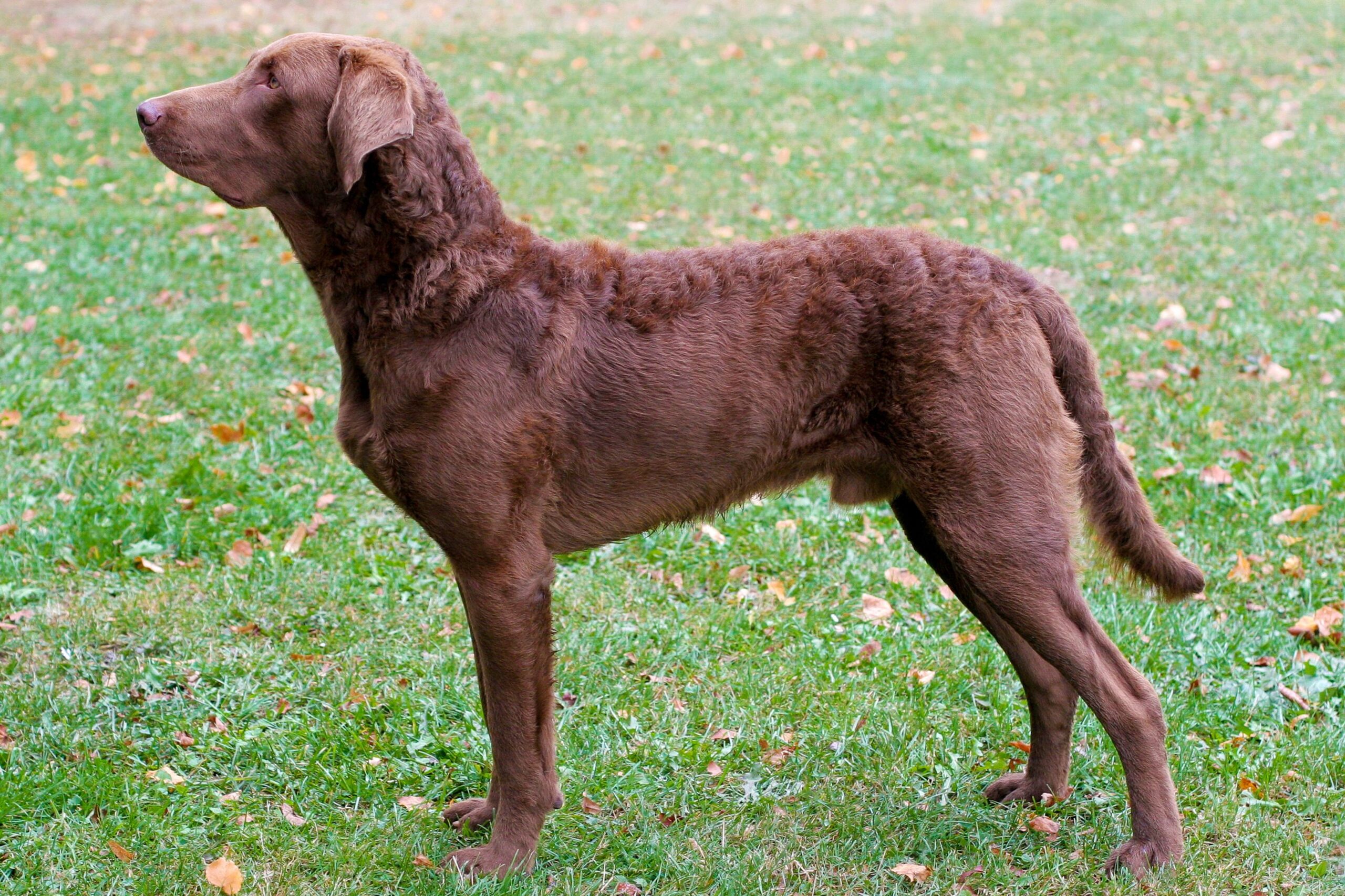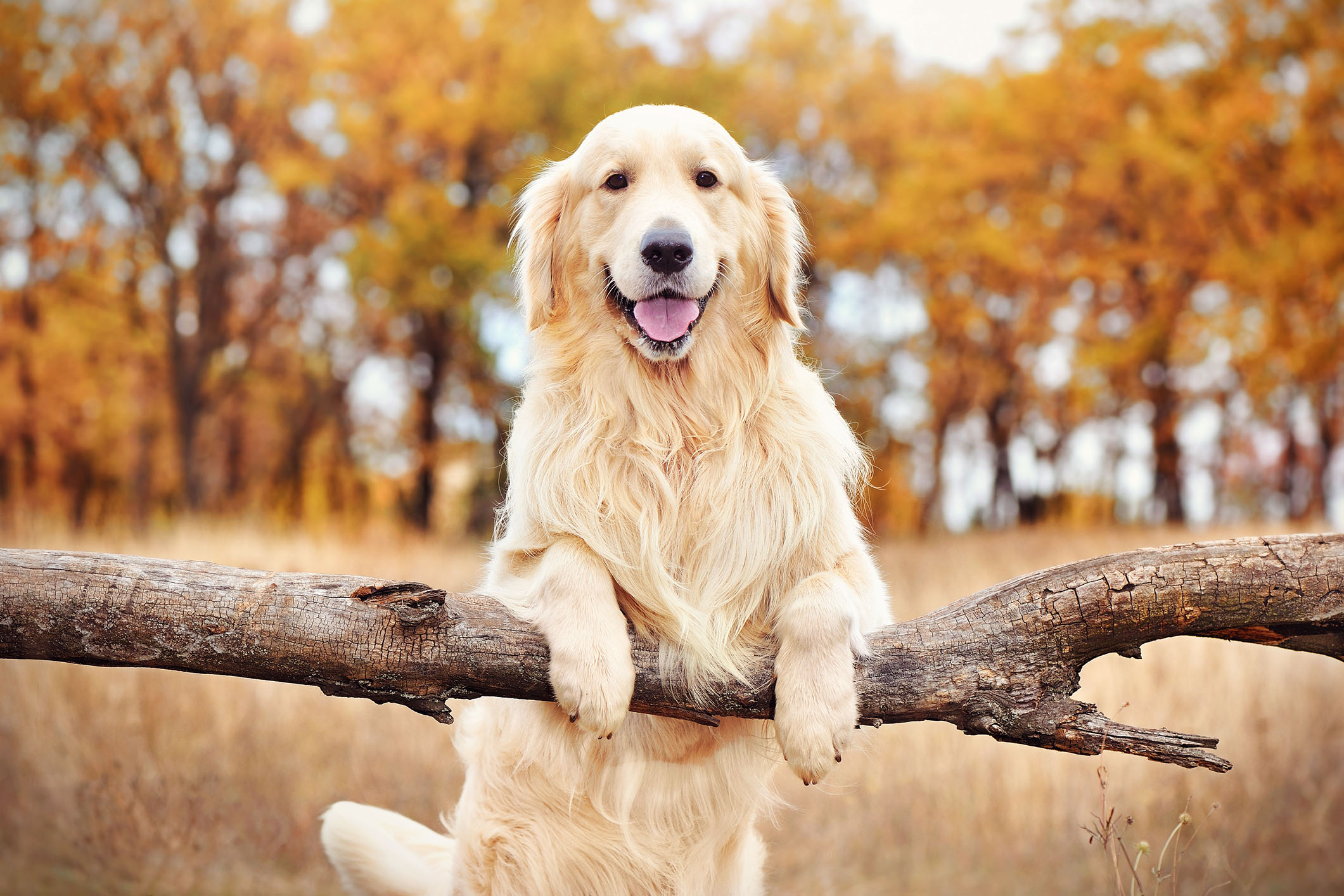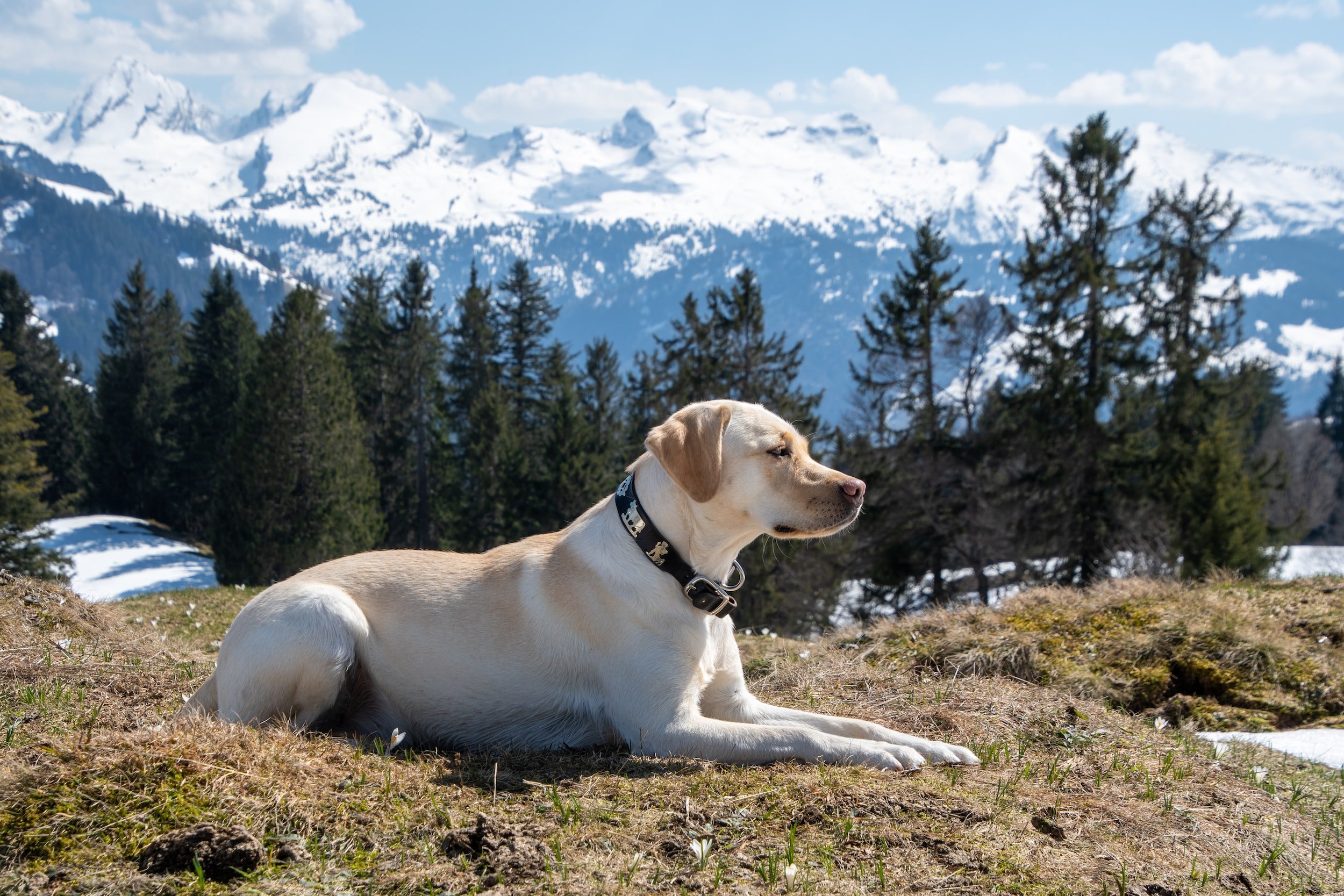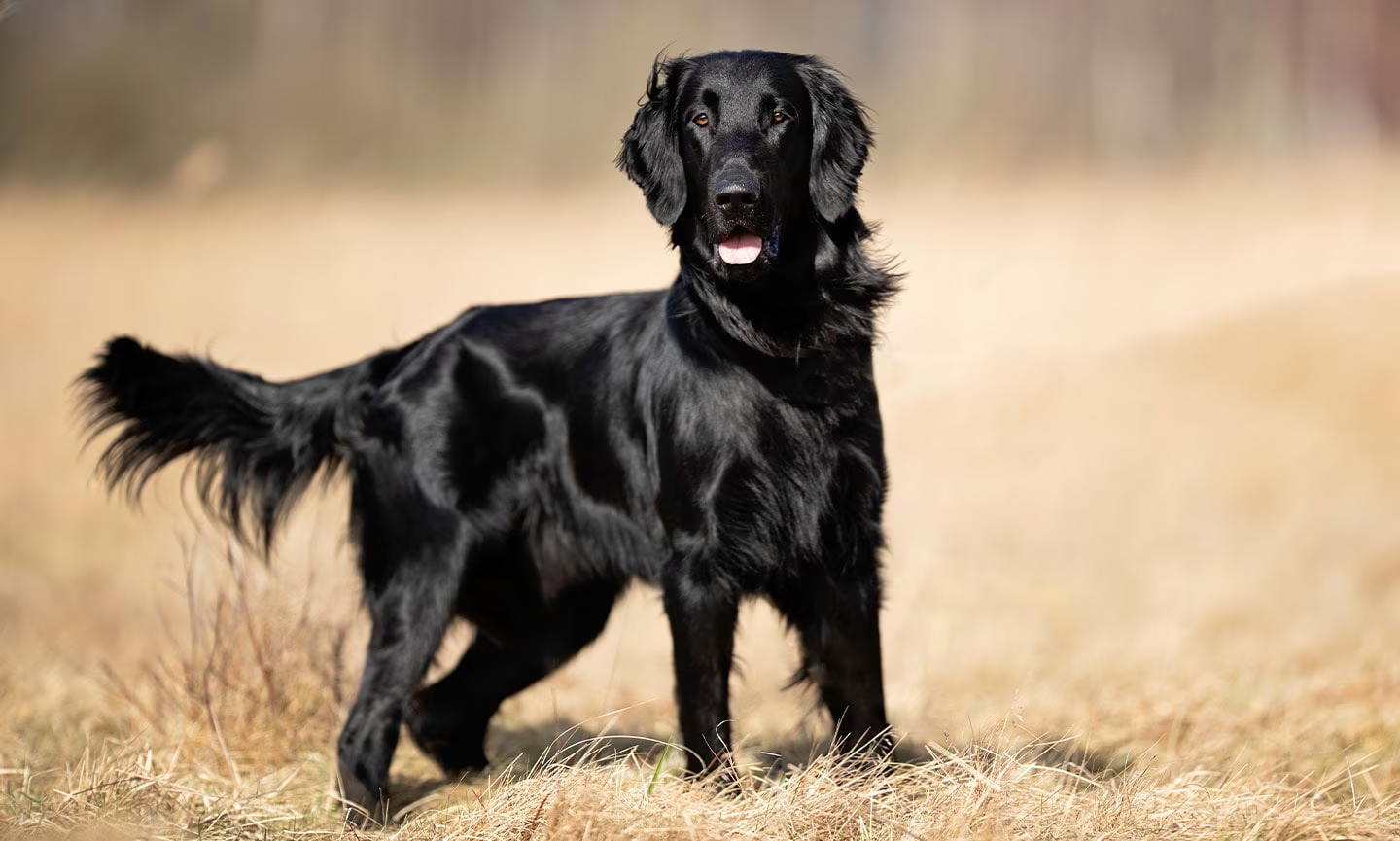Among the retriever family, there exists a smaller, fox-like member with a unique hunting method and an irresistible personality – the Nova Scotia Duck Tolling Retriever. Often simply called “Tollers,” these medium-sized, energetic dogs combine the athleticism of sporting breeds with distinctive looks and a playful, intelligent temperament that captivates everyone they meet.
At pawtrix.wiki, we’re dedicated to exploring all dog breeds, but the Toller deserves special attention for its fascinating hunting technique, relatively rare status, and the perfect balance of work ability and family companionship it offers. Unlike many retrievers bred primarily to retrieve after the shot, Tollers were developed with an additional unique skill – the ability to “toll” or lure waterfowl within range through playful movements along shorelines.
What sets Tollers apart from other retrievers isn’t just their unique hunting style but also their striking appearance – with their medium-sized frames, rich red coats, and white markings, they resemble small golden retrievers with a fox-like quality that turns heads wherever they go. Their expressive eyes, perpetually smiling faces, and boundless enthusiasm create a distinctive presence that’s impossible to ignore.
Throughout this guide, we’ll explore everything that makes Nova Scotia Duck Tolling Retrievers special – from their fascinating development by Canadian hunters to their distinctive traits, care requirements, and whether they might be the perfect match for your lifestyle. By the end, you’ll understand why Toller enthusiasts are so passionate about these captivating dogs and why the breed continues to gain admirers despite remaining relatively uncommon.
Canadian Origins: The “Little Duck Decoy Dog”
The Nova Scotia Duck Tolling Retriever boasts a fascinating origin story deeply rooted in Canadian hunting traditions, with a specialized hunting technique that sets it apart from all other retrieving breeds.
Development in Nova Scotia
As their name clearly indicates, Tollers were developed in Nova Scotia, Canada, specifically in the Yarmouth County region during the early 19th century. They were created by local hunters who needed a specialized dog that could perform the unique hunting technique known as “tolling” – a method inspired by the way foxes naturally lure curious waterfowl.
Local hunters had observed an interesting natural phenomenon: when foxes play along shorelines, making quick, darting movements before disappearing into the brush, ducks and other waterfowl would be drawn by curiosity toward this activity. The clever Nova Scotia hunters decided to develop a dog that could replicate this fox-like behavior, essentially creating a living decoy.
The exact breeds that contributed to Toller development aren’t definitively documented, but they likely included:
- Various local retrievers and spaniels
- Setters and/or early retrievers brought by European settlers
- Farm collies for intelligence and working ability
- Possibly some influence from native breeds
The result was a small, agile retriever with a fox-like appearance and the perfect combination of playful enthusiasm for tolling, retrieving ability, and a water-resistant coat suited to the cold Canadian waters.
The Unique Tolling Technique
The hunting method for which these dogs were developed is truly unique in the canine world. Here’s how traditional tolling works:
- The hunter remains hidden in a blind near the shoreline
- The Toller plays along the shoreline, running back and forth, retrieving sticks or balls thrown by the hidden hunter
- The dog’s quick, playful movements and flashing red coat attract the attention of curious waterfowl
- Ducks and geese swim closer to investigate this fox-like activity
- When birds are within range, the hunter calls the dog back to the blind
- After the shot, the Toller performs the more traditional retriever role, retrieving downed birds
This distinctive hunting method gave the breed its name: “tolling” comes from an old English word meaning to lure or entice. The breed became known locally as the “Little River Duck Dog” or “Yarmouth Toller” before eventually being named the Nova Scotia Duck Tolling Retriever.
Recognition and Growth
Despite being developed in the early 1800s, the Toller remained relatively unknown outside Nova Scotia for generations:
- 1945: Recognized by the Canadian Kennel Club
- 1980s: Began gaining popularity outside Canada
- 1984: First Tollers were imported to the United States
- 2001: Recognized by the American Kennel Club (as the 125th recognized breed)
- 2003: Recognized by the United Kennel Club
While still relatively uncommon compared to many sporting breeds, the Toller has gradually gained enthusiasts worldwide who appreciate both its working abilities and companionable nature. They remain particularly popular in their native Canada, where they’re still used for their original purpose by some hunters, while increasingly serving as versatile family companions and performance dogs in various dog sports.
The Distinctive Toller: Fox-Like Beauty with Purpose
The Nova Scotia Duck Tolling Retriever has a distinctive appearance that combines athletic ability with eye-catching beauty. Every aspect of their physical structure serves their original dual-purpose as both tolling decoys and retrievers.
Size and Structure: The Smallest Retriever
Tollers are the smallest of the retriever breeds, with a balanced, medium-sized frame:
- Males stand 18-21 inches at the shoulder and weigh 45-51 pounds
- Females stand 17-20 inches and weigh 37-43 pounds
- Body is slightly longer than tall, with moderate bone
- Well-proportioned with athletic build
- Overall appearance suggesting power, agility, and alertness
Their size perfectly suits their original purpose – small enough to make the quick, playful movements needed for tolling, yet substantial enough to retrieve waterfowl from cold water. Their compact build allows them to be easily transported in small boats or canoes, an important consideration for hunters in the marshy areas of Nova Scotia.
Their athletic structure combines strength with agility, creating dogs that can move with the quick, darting movements needed to mimic a fox’s play along shorelines, yet still have the swimming power and stamina required for retrieving in cold Canadian waters.
The Fox-Like Coat
A Toller’s coat is one of their most distinctive features:
- Medium-length double coat with soft, dense undercoat
- Straight to slightly wavy outer coat with water-resistant qualities
- Rich red to golden-red coloration, often with varying intensity
- White markings typically on chest, feet, tip of tail, and often a facial blaze
- Feathering moderate on neck, behind ears, legs, and tail
The Toller’s beautiful red coat served a crucial purpose in their development – it mimics the color of a red fox, enhancing their effectiveness in the tolling role. The flashing red color as they play along shorelines is key to attracting waterfowl.
Their double coat provides excellent protection in cold water, with the dense undercoat offering insulation while the water-resistant outer coat sheds moisture quickly. This allows them to work effectively in the challenging conditions of Nova Scotia waters, even in cold weather.
The Expressive Face
Tollers have a distinctive head and expression:
- Clean-cut, slightly wedge-shaped head
- Medium-sized, almond-shaped eyes set well apart
- Eye color blending with coat (usually amber to brown)
- Alert, intelligent, and friendly expression
- Medium-sized ears set high and carried in a slightly forward position
Their expression is one of their most endearing features – intelligent, alert, and often described as having a “mischievous” quality that accurately reflects their playful personality. Their attentive gaze and responsive expressions reveal their keen intelligence and readiness for action.
The slightly wedge-shaped head with its moderate stop and tapering muzzle contributes to the fox-like appearance that served their original purpose as tollers. The overall head shape strikes a perfect balance between the refinement needed for retrieving and the distinctive appearance that enhances their tolling effectiveness.
The Always-Ready Tail
The Toller’s tail is particularly characteristic:
- Heavily feathered “brush” tail
- Carried high in action or alertness
- Often has a white tip (the “tail flag”)
- Constantly in motion when the dog is excited or working
- Serves as a rudder when swimming
This ever-active tail is more than just an expression of their enthusiasm – it serves as a highly visible signal during tolling work, enhancing their visibility to waterfowl and adding to the fox-like impression that makes them effective decoys. When swimming, it functions as an effective rudder, contributing to their excellent swimming abilities.
The Toller Temperament: Intelligent, Playful, and Ready for Action
Beyond their distinctive appearance, Nova Scotia Duck Tolling Retrievers possess a unique temperament that perfectly balances work ethic with joyful companionship. Their combination of intelligence, playfulness, and alertness creates dogs with unmistakable character and presence.
The Playful Worker
The Toller’s most distinctive temperament trait is their natural playfulness, which served their original purpose perfectly:
- Intense play drive that can be channeled into work
- Natural retrieving instinct
- Loves repetitive games (essential for tolling)
- Maintains puppy-like enthusiasm well into adulthood
- Tireless energy when engaged in stimulating activities
This playfulness isn’t just charming – it was essential to their working role. Tolling requires a dog that genuinely enjoys repetitive play along shorelines, retrieving sticks or balls thrown by the hidden hunter over and over with undiminished enthusiasm. This natural play drive is still evident in modern Tollers, who typically maintain their playful spirit throughout their lives.
Their working heritage also gives them a strong desire for activity and purpose. While they’re affectionate companions, they’re not typically lap dogs – they prefer to be doing something, whether it’s formal work, training, play, or exploration.
The “Toller Scream”
One of the breed’s most distinctive behavioral traits is what enthusiasts call the “Toller scream”:
- High-pitched vocalization made when excited or anticipating action
- Not typical barking, but a unique sound between a whine, howl, and bark
- Often heard before retrieving games or when highly stimulated
- Can be quite loud and distinctive
- Varies in intensity between individuals
This unique vocalization is often described as sounding like excitement that simply can’t be contained in their medium-sized bodies. While not all Tollers “scream,” the trait is common enough to be considered characteristic of the breed. For some owners, it’s an endearing quirk; for others, it can be a challenge, particularly in close living quarters.
Intelligence and Trainability
Tollers combine intelligence with a strong work ethic:
- Quick learners who pick up new tasks easily
- Problem-solvers who can think independently
- Eager to work with their handlers on meaningful tasks
- Respond best to positive, engaging training methods
- May become bored with repetitive drilling or harsh methods
Their intelligence makes them highly trainable, but they do best with handlers who understand their need for variety and mental stimulation. Unlike some sporting breeds bred primarily for biddability, Tollers often show a more independent streak – they want to understand the purpose behind commands rather than simply comply without question.
This intelligence also means they need mental as well as physical exercise. Without appropriate mental challenges, they may channel their problem-solving abilities into less desirable activities like figuring out how to raid the garbage or escape from the yard.
Family Bonds and Social Nature
With their families, Tollers typically show deep attachment:
- Devoted to their people and eager to be included in activities
- Generally good with children, especially when raised with them
- Often bond most strongly with the most active family member
- Want to be where their people are, participating in daily life
- May show some reserve with strangers initially
While not as immediately outgoing with strangers as some retriever breeds, Tollers typically warm up quickly once properly introduced. Their slight initial reserve isn’t fearfulness or aggression, just a moment of assessment before deciding a new person is a friend.
With family children, well-raised Tollers are typically patient and gentle, adjusting their play style appropriately. Their medium size makes them less likely to accidentally knock over small children than larger retrievers, though their enthusiasm still requires supervision with very young children.
Living With a Toller: Practical Considerations
Beyond their appealing temperament and distinctive appearance, what’s it actually like to share your daily life with a Nova Scotia Duck Tolling Retriever? Let’s explore the practical aspects that potential owners should consider.
Exercise Requirements: Active and Engaged
Tollers have significant exercise needs that must be met for them to be balanced, happy companions:
- Require 60-90 minutes of active exercise daily
- Thrive with a variety of activities that engage both body and mind
- Love water activities when available
- Excel at interactive games like fetch and frisbee
- Need mental challenges alongside physical exercise
Simply having a fenced yard isn’t sufficient – Tollers need interactive exercise that engages them mentally as well as physically. They particularly enjoy activities that incorporate their natural retrieving instincts, like fetch games, frisbee, and water retrieves.
Their intelligence means they benefit greatly from training activities that challenge their minds. Scent work, tracking, agility training, and other dog sports provide excellent outlets for their mental and physical energy while strengthening the bond between dog and handler.
Training Approach: Engagement and Variety
Successfully training a Toller involves understanding their intelligent, sometimes independent nature:
- Start early with positive socialization and basic manners
- Use positive, reward-based methods that maintain enthusiasm
- Keep training sessions varied and engaging
- Incorporate play and retrieving into training when possible
- Be consistent with expectations while avoiding harsh corrections
Tollers typically learn quickly and respond enthusiastically to training that engages their natural abilities and intelligence. They excel when training incorporates their retrieving instincts and play drive, making learning feel like a game rather than work.
Early socialization is particularly important to help them develop confidence in various situations. While not typically shy, Tollers benefit from positive exposure to different people, animals, environments, and experiences during their formative months.
Grooming Needs: Moderate but Regular
The Toller’s beautiful coat requires regular but not excessive maintenance:
- Brush weekly to prevent tangles and remove loose hair
- More frequent brushing during seasonal shedding periods
- Pay special attention to feathering on legs, ears, and tail
- Bathe only when necessary to preserve natural oils
- Regular ear checks and cleaning, especially after swimming
Their double coat sheds moderately year-round with heavier seasonal shedding, typically in spring and fall. During these “blowing coat” periods, daily brushing helps manage the significant amount of loose hair and prevents matting.
Their ears need regular attention, especially for dogs who swim frequently, as the drop ear structure can trap moisture and lead to infections if not properly cleaned and dried. Regular nail trimming and dental care round out their grooming needs.
Health Considerations: Generally Healthy but Specific Concerns
Nova Scotia Duck Tolling Retrievers are generally healthy dogs with a lifespan of 12-14 years, but they do have some breed-specific health concerns:
- Progressive Retinal Atrophy (PRA) and other eye conditions
- Hip and elbow dysplasia
- Autoimmune disorders, particularly Addison’s disease
- Juvenile Addison’s Disease (JADD) or Tolling Retriever Dysimmune Disease (TRDD)
- Degenerative Myelopathy in some lines
Working with a reputable breeder who conducts appropriate health testing is essential. The relatively small gene pool of this uncommon breed means that genetic diversity and careful breeding practices are particularly important.
The breed-specific autoimmune conditions deserve special mention – Tollers have higher rates of immune-mediated conditions than many breeds. Responsible breeders screen for known genetic markers and work to reduce the incidence of these conditions in their breeding programs.
Space Requirements and Home Environment
Tollers can adapt to various living situations with proper consideration:
- Do best in homes with secure yard space
- Can adapt to suburban environments with sufficient exercise
- May be manageable in apartments with exceptional exercise commitment
- Appreciate access to water for swimming when possible
- Need secure fencing due to potential prey drive and exploring nature
Their moderate size makes them less demanding in terms of space than larger sporting breeds, but they do need room to move comfortably. Their energy level means they typically do best in environments where they have regular access to outdoor activities.
Tollers generally don’t do well when left alone for extended periods, as they’re social dogs that prefer human company and activity. They’re best suited to homes where someone is present much of the day or where doggy daycare or dog walkers can provide interaction during necessary absences.
Tollers and Families: Finding the Right Match
Nova Scotia Duck Tolling Retrievers can make excellent family companions for the right households. Their playful nature and moderate size combine with genuine affection to create dogs that often integrate beautifully into active family life.
With Children: Playful Partners
Tollers typically show excellent compatibility with family children:
- Energy level matches well with active children
- Size is substantial enough for play without being overwhelming
- Generally patient and gentle with family kids
- Love interactive games that children can participate in
- Form strong bonds with children who engage them in play and training
Their playful nature makes them natural companions for children who can engage them in appropriate activities. Their retrieving drive creates endless opportunities for interactive games that both children and dogs enjoy.
As with any dog, supervision is important, especially with very young children. Tollers’ enthusiasm can sometimes lead to accidental knockdowns during play, though their moderate size makes this less likely than with larger breeds.
Multi-Pet Households
Tollers can integrate well into homes with other pets with proper consideration:
- Generally good with other dogs when properly socialized
- Can learn to live with cats, especially when raised together
- May have some prey drive toward very small pets
- Typically respect established pet hierarchies with proper introduction
- Often enjoy having canine playmates with similar energy levels
Their sociable nature extends to other animals in most cases, though their hunting background means they may show interest in chasing small animals. Early socialization and proper introductions help create positive relationships between Tollers and other household pets.
Many Tollers particularly enjoy having canine companions who can match their play style and energy level. A well-matched pair of dogs can help entertain each other, though they still need plenty of human interaction and guidance.
The Ideal Toller Home
These distinctive retrievers tend to thrive in these types of environments:
- Active families who enjoy outdoor recreation
- Homes where they’ll receive plenty of interaction and mental stimulation
- Environments offering opportunities for retrieving games and water activities
- Households committed to positive training and socialization
- Families who appreciate an intelligent, sometimes independent companion
They may be less ideal for:
- Very busy households with little time for exercise and interaction
- Extremely neat or minimalist homes (they shed and can be messy)
- Those seeking a calm, low-energy companion
- Families wanting a dog that’s immediately friendly with all strangers
- Homes where the dog would be left alone for extended periods
The happiest Tollers are those who are treated as full family members and included in daily activities while having their exercise, training, and companionship needs met. Their adaptive nature means they can thrive in various family structures, from active individuals to families with children, provided they receive appropriate care and attention.
Finding Your Toller: Making the Right Match
If you’ve decided a Nova Scotia Duck Tolling Retriever might be right for your family, there are several paths to consider in your search for a healthy, well-bred companion.
Working with Reputable Breeders
Finding a responsible breeder is crucial for a healthy, well-adjusted Toller:
- Look for breeders who perform health testing (hips, eyes, and genetic screening for breed-specific conditions)
- Ask about autoimmune conditions in their lines, as these are significant concerns
- Consider whether field/working lines or show/companion lines better suit your lifestyle
- Expect to be thoroughly interviewed about your home and expectations
- Be prepared to wait – good breeders often have waiting lists for this uncommon breed
Reputable breeders invest in health testing, careful breeding decisions, and proper puppy raising practices. They typically provide ongoing support throughout the dog’s life and stand behind their puppies with guarantees regarding health and temperament.
The Nova Scotia Duck Tolling Retriever Club of America and similar clubs in other countries can provide referrals to responsible breeders. Due to the breed’s relative rarity, you may need to travel or wait for the right puppy, but this patience is rewarded with a healthier, more stable companion.
Rescue and Adoption
For those open to adult dogs, rescue can be a wonderful option, though Tollers are relatively uncommon in rescue:
- Breed-specific rescues occasionally have Tollers available
- General sporting dog rescues might sometimes have Tollers or mixes
- Adult dogs come with known personalities and often basic training
- Adoption fees typically include initial veterinary care and often spay/neuter
- Be prepared for a potentially long wait due to the breed’s rarity
Toller rescue organizations can be excellent resources, though the breed’s relative uncommonness means available dogs are limited. Being open to adult dogs, mixes with Toller characteristics, or related sporting breeds might increase your chances of finding a rescued companion with similar traits.
Questions to Ask Before Committing
Before bringing a Nova Scotia Duck Tolling Retriever into your life, honestly assess:
- Can you provide the daily exercise and mental stimulation these active dogs require?
- Do you have time for regular training and interaction?
- Is your home environment suitable for an energetic, intelligent dog?
- Are you prepared for their grooming needs and seasonal shedding?
- Can you commit to 12-14 years with this dog?
- Are you comfortable with the “Toller scream” and their vocal nature?
Taking the time for self-assessment helps ensure a successful match between your lifestyle and the needs of a Nova Scotia Duck Tolling Retriever. Remember that responsible ownership means meeting the dog’s needs, not just fulfilling your desire for a particular breed.
Conclusion: Is a Nova Scotia Duck Tolling Retriever Right for You?
After exploring the world of Nova Scotia Duck Tolling Retrievers, you might be wondering if this distinctive breed is the right match for your lifestyle and home.
Tollers offer a wonderful combination of moderate size, athletic ability, and playful intelligence that makes them excellent companions for active individuals and families. Their striking appearance, unique history, and versatile abilities create dogs that bring both beauty and function to the lives of their owners. For those seeking an engaged, intelligent companion for outdoor adventures and family life, Tollers can be ideal partners.
However, they’re not for everyone. Their exercise needs require commitment. Their intelligence demands mental stimulation and consistent training. Their playful nature means they maintain high energy well into adulthood. Their social needs mean they don’t thrive when left alone for long periods.
The perfect Toller owner is someone who:
- Enjoys regular outdoor activities and wants an enthusiastic canine partner
- Appreciates an intelligent dog who thinks independently
- Can provide consistent, positive training and clear boundaries
- Values playfulness and energy in a medium-sized package
- Wants a devoted companion who remains young at heart
If you’re considering a Toller, take time to meet various dogs, speak with experienced owners and breeders, and honestly assess whether your lifestyle and expectations align with the breed’s needs. Remember that choosing a dog is a commitment for the entirety of that dog’s life—ideally 12-14 years for a healthy Toller.
For those who do choose a Nova Scotia Duck Tolling Retriever and commit to meeting their needs, the rewards are substantial—an intelligent, playful companion with striking good looks and versatile abilities, who approaches life with enthusiasm and forms deep bonds with their people. Whether serving as a family pet, sporting companion, performance dog, or all of these roles, the Toller represents a unique treasure among retriever breeds.
Here at pawtrix.wiki, we believe in matching the right dog with the right home. If the Nova Scotia Duck Tolling Retriever’s unique combination of size, appearance, and temperament speaks to you, and you’re prepared to meet their needs, you might have found your perfect canine companion—a fox-like retriever with a playful spirit, sharp mind, and devoted heart who will enrich your life with their distinctive character and endless enthusiasm for whatever adventures you might share.




